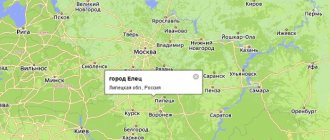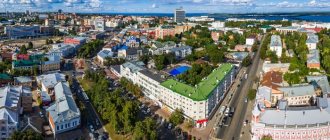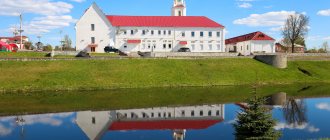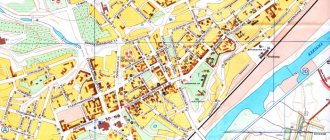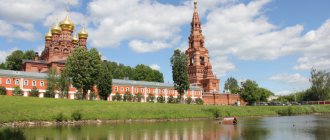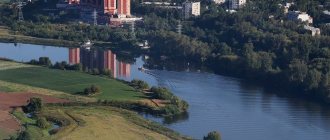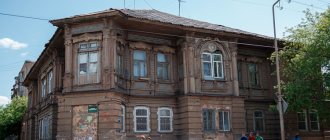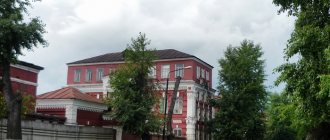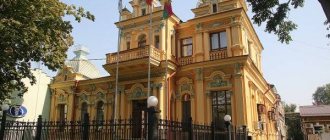Year founded: 1146
Yelets celebrates city day on
the 1st Sunday of September
.
In 2022,
this date is
September 4
.
City of military glory (Photo: elets-adm.ru)
Dace
- a Russian city, the center of the Yeletsk district of the Lipetsk region, located on the banks of the Bystraya Sosna River.
For the first time Yelets
was mentioned in 1146. In 1283, the city was devastated by the troops of Khan Akhmat Temir. In the 14th century, Yelets was repeatedly destroyed by the Tatars. In 1395, Tamerlane's troops stormed the city. Together with the townspeople, Yelets was defended by one of Tokhtamysh’s commanders, Bek-Yaryk-oglan. The city was once again destroyed, but the conqueror refused a further campaign against Rus'.
In 1592, the Yeletsk fortress was restored. In 1618, the city was taken and ravaged by the troops of Hetman Konashevich Sagaidachny. By the end of the 17th century the city became an important supplier of bread. Grain supplies for the army of Peter I near Azov and the Don Cossacks brought unprecedented profits to the city. At the end of the 19th century, flour milling and lace making developed in the city.
The bread trade continues to develop; in 1888, the first grain elevator in Russia was built for 400 thousand poods of grain. It still works today.
Before the revolution, Yelets was recognized several times as one of the most comfortable cities in Russia. The civil war again greatly destroyed the city.
In the pre-war period, the city's industry developed intensively. During the Great Patriotic War, Yelets was occupied for five days from December 4 to 9, 1941, but until August 5, 1943, Yelets was intensively bombed.
In the post-war years, the city quickly recovered. By 1950, the pre-war level of industrial production had been surpassed. In the eighties of the 20th century, the city became one of the most important industrial centers of the country.
Ascension Cathedral After the collapse of the USSR, almost all enterprises found themselves on the verge of stopping, and the volume of output decreased sharply. But at the beginning of the 21st century, the city is being revived: churches are being restored, the Trud stadium is being reconstructed, a drama theater is being created, and new enterprises are opening. On October 8, 2007, Yelets was awarded the title “City of Military Glory.”
Yelets is rich in attractions
, despite its repeated destruction: the Ascension Cathedral, the Grand Ducal Church, the Znamensky Convent, city churches, civil buildings of the 18th and 19th centuries.
Interesting
, that in Yelets, on the banks of the Bystraya Sosna River, an obelisk was erected in the place where in 1592, Patriarch of All Rus' Alexy I ordered the restoration of the city.
The city has a population of more than 102 thousand people (2020).
Day of the city
Elets celebrates in September.
General information and history of Yelets
Yelets is one of the most mysterious cities in Russia - a regional center, part of the Lipetsk region.
Once upon a time there was a fortress on the banks of the Bystraya Sosna River, which flows into the Don. Today, Yelets, not yet fully studied by historians, has not yet determined its true time of origin. It has been mentioned in chronicles since 1146 as a bastion on the southeastern border, protecting Russian lands from raids by the Polovtsians, Pechenegs, and Tatar-Mongols. The time when Prince Svyatoslav Olegovich passed through Yelets to Ryazan, as stated in the chronicle, is considered to be the year the city was founded.
Yelets, Ascension Cathedral
But it is obvious that the city arose much earlier - according to unconfirmed data, in the second half of the 10th century. Presumably, the founding date of the city could be 986. However, it was specifically recognized in 1389, when a historical meeting between Prince Yuri Yeletsky and Metropolitan Pimen took place at the confluence of the Don and Voronezh rivers.
Until the time Yelets passed into the domain of Moscow, it was listed as a military fortress and experienced blows from major attacks: the Tatar-Mongol yoke, the troops of Khan Akhmat Temir, the troops of Khan Uzbek, Khan Togai, the Battle of Kulikovo also did not bypass the fortress city . In 1395, Yelets was devastated by the troops of Tamerlane. But an amazing fact still remains a mystery - why Tamerlane, who successfully captured the fortress city, did not advance to Russia further than Yelets. One day the conqueror turned his troops back, justifying his actions with a prophetic dream about this city, in which he saw saints with a great army defeating him.
Yelets courtyards
Since ancient times, the city of Yelets, in all its splendor, has been considered the holiest city in Russia, with many temples, churches and monasteries. One can take the event with Tamerlane that happened many years ago as a miracle.
Tamerlane
In Yelets, near the Ascension Cathedral, there is a chapel, next to it is the grave of soldiers who died during Timur’s invasion. Let's remember one of the legends of Yelets.
In 1395, Tamerlane defeated the troops of the Golden Horde and went to the northwest. I reached the city of Yelets, and something unexpected happened here. The fearless conquerors took the fortress without difficulty, but they did not know what to do with it next. There were no valuables in the city that could attract the attention of the all-powerful enslavers.
Tamerlane stopped and thought. And he stood in the pouring autumn rain with his army for no less than two weeks. Before, the Iron Lame had never allowed himself such a long period of inactivity.
So, Tamerlane stood and thought and abandoned the idea of conquering Muscovy. Why? Seeing the poor, provincial town of Yelets, he, a cold-blooded and cynical man, decided that the game was not worth the candle. Why go north? Everything there was plundered and burned by Tokhtamysh, and meanwhile the spies reported: the Muscovites are not delaying, gathering an army, preparing for battle.
For two weeks, Tamerlan weighed the pros and cons, listened to spies and “analysts,” and looked at the unfortunate city of Yelets. Yes, and turned towards Astrakhan.
However, perhaps Timur, as the famous legend says, really had a bad dream, after which he lost the desire to plunder plundered Rus'. And the small town of Yelets has nothing to do with it...
Climate and ecology
Today Yelets is a quiet small town with beautiful natural landscapes and a temperate climate. Winters here are moderately cold, and summers are warm and sunny. The average air temperature in summer is +20 C, in winter -10 C. Precipitation per year is about 500 mm. Dry, strong thunderstorms are sometimes observed in the summer.
Elets in winter
The ecological state of the city, due to modernity, as in many cities, has its drawbacks. Every year, floating debris accumulates near the pontoon bridge. On the banks of the Bystraya Sosna River you can find heaps of household waste. This is most likely due to the fact that waste collection in the city is not well organized and residents are forced to create appropriate landfills.
However, the struggle for the environment in the city is ongoing continuously. Schoolchildren and students organize entire campaigns to clean up the environment in order to make their hometown cleaner and even more beautiful. It should be noted that the city itself, in comparison, is orderly thanks to the vigilant residents of Yeltsin.
Until 2012, the main source of pollution was considered to be the Sugar Factory, which discharged wastewater into the B. Sosna River, which led to a violation of the hydrochemical regime of the river. But, according to media reports, the discharge of contaminated wastewater has been stopped since January 12, 2012. And today the B. Sosna River is considered environmentally friendly and accessible for beach holidays and swimming.
Where is
Yelets cannot be avoided by those who travel to the sea - it is located on the right side of the M-4. If you have time, it is worth visiting this small land of serenity on the way to the Sochi resort and see at least a few local attractions. For example, an exhibition of military equipment is an open-air museum, not far from the Karakum Bridge.
Yelets is located 400 km from Moscow. Can be reached by bus. There are two tiny bus stations here, located at different ends of the city. One at the merchant. The other is on Zadonskaya Street (this station is located on the way from Yelets to another wonderful city in the Lipetsk region - Zadonsk). From Moscow, buses run from Paveletsky station and Krasnogvardeyskaya station.
Population of Yelets
Yelets has always attracted tourists and immigrants with its beauty and uniqueness. Despite the fact that during the civil wars and post-revolutionary times, as well as in connection with the Second World War, the population decreased noticeably, from 1950 to the present day there has been a significant increase. In just 5 years from 1950 to 1954, the population of the city of Yelets increased by 70 thousand inhabitants.
Due to the movement of villagers to the city in the 60s, when industry was rapidly developing and more and more workers were needed, the population acquired a simply frantic growth rate. In the 90s, migration to the city did not stop, but decreased somewhat. At the end of the same 90s, the population of Yelets reached 120 thousand people.
Maslenitsa celebrations
In the 2000s, the population briefly became stable and subsequently declined slightly. According to data at the beginning of 2014, the population of the city of Yelets was 106,377 people. Such statistics over the past 10 years are due to the fact that people are now moving to larger cities and regional centers.
The doors of the Yelets Hotel are always open for city guests. However, this is the only hotel in the city, but it has a sufficient number of rooms. To accommodate everyone.
The city of Yelets is home to several universities - branches of universities in other regions and the well-known Yelets State University. Bunin, allowing local and visiting students to receive a decent public education in various specialties. Due to this, a large percentage of the city's population is between 18 and 25 years old. Many people who come to Yelets for the first time meet practically only young people on the streets, which creates a corresponding impression. You can often hear about the city of Yelets that it is a student city.
Yelets State University named after. Bunina
Many outside observers and guests of the city, passing through or on vacation, define the moral level of the residents as calm and friendly people. It’s not so often that you can find noisy companies on the streets after midnight. Although their complete absence cannot be denied either. All public events close, as a rule, no later than twelve at night.
Soviet time
After the revolution of 1917, the city became different. The devastation stopped the development of Yelets for many years; the Civil War dealt particular damage to it. Afterwards, local residents began to restore the farm. However, these were already different Yelts - collectivization led to population migration to the cities.
By the mid-30s, about twenty enterprises operated here. And the churches were all closed.
Of course, the Great Patriotic War brought heavy losses to the city. In those years, Yelets was an important base for the front, and the operation of the same name became an integral part of the battle for Moscow. The occupation lasted five days. On December 11, the city was liberated from the Nazis.
On the 75th anniversary of the lifting of the occupation, a reconstruction of street fighting took place, organized by patriotic clubs in Moscow, Kursk, and Belgorod.
Districts and real estate of Yelets
Yelets Map
Yelets is located 80 km from Lipetsk, the regional center. The city's territory extends over 65.1 square meters. km. Initially, the city was built on the left bank of the Bystraya Sosna River, after which, thanks to the nearby villages and settlements that eventually merged into the city, it grew and occupied both banks.
Lenin Square
In addition to the small settlements that joined, the city acquired new areas through construction: the 7th microdistrict, New Homes, Elta, Stroitel. Moreover, relative to the last 3 districts built in the 70s-80s, the 7th microdistrict is young and continues to be built up with new high-rise buildings.
From the “old” city, in our time there are separate, designated areas, the names of which are present only in the vocabulary of local residents and are not official, such as: Luchok, Zaton, Argamach, Kamenya, Chernaya Aleksandrovskaya, Lamskaya, Olshanets, etc. The village of Lava is also merged with the city and is practically not mentioned in any context as a suburb, but stands out as a remote area of the city with a private sector. Most, as mentioned above, of the names of the city's districts are based on the names of former villages.
Dace. Onion
But there are also areas of “industrial” origin. For example, the Elta district is named after the former house, on the territory of which they were once built for factory workers.
The entire right bank of the river is called Zasosna, i.e. the area that is located behind Bystraya Sosna, the main water resource of Yelets. In Zasosna, local residents identify a small area called the Red Barracks, where in ancient times there were military barracks. Their buildings are built of red brick, which gives them their name - Red. Today they house one of the buildings of the Yelets State University named after Bunin.
Due to the sustainable preservation of ancient manor houses, which are more than a hundred years old, the cost of real estate in the city does not depend on the distance from the center, but quite the opposite - on the comfort and convenience of the house. Apartments in modern new buildings located on the outskirts of the city are valued much higher than the central, once majestic houses that once belonged to the nobility, and today are divided into apartments. This is due not only to the dilapidation of the building, but also to the lack of basic amenities, such as running water, for example.
Houses of the old town
Many old houses in the central region are not equipped with toilets. node and water supply. Most often this is due to the fact that the layout and age of the buildings do not allow such installations. In the city center you can still find pumps where residents collect water with buckets.
Fans of historical values will certainly be interested in such a house in the style of past centuries. The most valuable, of course, are stone houses. But in order to purchase such a house as personal property, you will have to buy out entire apartments located in this house. A lot of money will be needed for the restoration of the building. But the result for connoisseurs is worth it.
In Yelets, ancient wooden houses, relatively small, are still alive. The disadvantage of these houses is perhaps low ceilings, but the advantage of meter-high walls compensates for the first. They are always warm in winter, and always cool in summer. Their cost can be relatively low.
The average price for apartments in old buildings in the central region ranges from 800 thousand to 1 million rubles. It is quite difficult to determine the cost by the number of rooms in the apartment; the price is based on the total area. This is due to the fact that ancient houses have a unique layout and are far from standard in relation to each other.
In modern new buildings (panel and brick houses), the apartments are, without a doubt, well-equipped. For example, the 7th microdistrict, which has 9-story new buildings, boasts modern spacious apartments, but it is located practically near the M-4 highway. However, based on the fact that the area of the city is not so large, the distance from the center is not very large - a 40-minute walk. The average cost of a one-room apartment in this area is approximately RUB 1,100,000.
Typical high-rise buildings of the 7th microdistrict
Private houses on the picturesque outskirts of the city with cozy courtyards, which Yerevan residents like to decorate in an old style, are in great demand.
Modern Yelets
Many enterprises do not operate, there is no work, the streets are dirty, buildings are in disrepair - this is what a visitor who has little interest in local attractions can say about the city. And there is truth in these words.
There are very few children's playgrounds here. As a family, Yelts residents go to the city park or, if possible, to Kudykina Mountain, which is conveniently accessible only by car.
There is also some entertainment for adults here. One bowling alley, one cinema, many beer bars (there are more of them here than pharmacies) and the night club “KaraKum”, where a simple crowd gathers and sometimes fights and showdowns in the style of the 90s occur. In general, everything is the same as in any other Russian provincial city.
A vacation in Yelets should be understood as an excursion, although there are many picturesque places in the vicinity of the city.
City infrastructure
The infrastructure of the city of Yelets continues to develop. City authorities are trying to regulate rising utility tariffs. It is not always easy for ordinary people to correctly assess the increase in tariffs and compare them with the actual promised percentage increases. Therefore, new receipts arriving every month still surprise with their changes towards an increase in the total amount for utilities.
This urgent problem has existed for several years. But it should be noted that various programs are being developed for the housing and communal services complex of the city of Yelets that could lead to the regulation of rising tariffs for gas, water, electricity, housing maintenance, as well as improving the livability of the housing stock. These programs imply the allocation of funds from the budget for the reconstruction of residential buildings, renovation of apartment buildings, construction of children's playgrounds and much more.
The city of Yelets is also surprising for its narrow streets, which many centuries ago were not designed for motor transport at all. In this regard, many streets have one-way traffic. And if you are driving a car, being in the city center, and want to get to the next parallel street, then you may have to drive around a large square of territory.
Novolipetskaya Street
The surface of the main road sections in the city is asphalt, with the exception of private sectors on the outskirts, where there is a dirt road. The condition of the road surface is far from ideal. On some sections of the roads you can find significant holes or patched gaps. However, road repairs are often carried out in the city. Patches can be found much less often. And the central streets were covered with new asphalt in 2011.
The main type of public transport is shuttle buses. The noticeable problem is that most of them are “accordion” releases of the time, which is now difficult to name. In winter, the temperature in such buses is probably only a couple of degrees higher than outside. The accordion cabins are not heated at all. But as a consolation to everything, city public transport also consists of “grooves” - the most comfortable and warm buses. It is impossible to find minibuses, which are familiar to many cities, among minibuses in Yelets.
Traffic jams in the city are rare. Most likely, this is due to the prevailing one-way traffic. However, during rush hours, slight congestion is possible on the main roads of the city.
Interesting places to relax with children
Yelets is an ideal place for a family holiday. There are plenty of places in the city where you can relax with children. Some of them are presented below.
Ice Palace named after. A. Tarasova
In 2014, a skating rink dedicated to the activities of the famous coach Tarasov opened in the city. Here you can attend figure skating lessons, as well as relax and have fun with your children during public skating.
The palace is equipped with the latest equipment, equipment, medical personnel and strong coaching staff who are ready to help.
Children's Park named after. B.G. Lesyuka
The park was formed by Lesyuk in 1947 and continues to exist and operate. In 2006, it changed its direction and began to refer to children's centers. They received many awards and were awarded the title of a park of the highest category. On its territory you can leave children under the supervision of an animator and teachers.
City Park
The park has a large number of different attractions that will interest not only children, but also adults for a long time. You can visit the botanical garden, relax in cozy gazebos and eat in a cafe.
Enterprises and work in Yelets
Since ancient times, Yelets has been a city of production. Trade in it is more of an accompanying activity than the main one.
In the industrial sector in Yelets, a large niche is occupied by such objects as the Cement Plant, the Yeletsk Electromechanical Plant, the Yeletsk Building Materials Plant, and the Machine-Building Plant. Among the mining industries, there are Lavsky and Olshansky quarries, the main products of which are crushed stone and sand. OJSC Gornyak also operates in Yelets, extracting limestone and chalk.
In the food industry, such factories and plants are occupied as the Eletsky Krupyanoy (Eletsky Bread Products Plant), the Eletsky Bread Factory, the Eletsky Meat Processing Plant OJSC, and the Eletsky Sugar Factory, which has three elevators.
It should be noted that in Yelets there is a production of tobacco products, which is produced by J.T.I. Yelets LLC, and also products from one of the oldest economic industries - Yelets lace - are produced at the factory of the same name JSC.
JTI-Elets production building
Production conditions in the city continue to modernize. Business owners strive to fully repay their employees' wage arrears that arose in the early years. For example, at Agro LLC, as well as at the Yeletsk potato experimental station, wage arrears were paid in full back in 2011.
Nowadays, the economy of Yelets, after experiencing a crisis situation, is gradually beginning to reach the next level. Factories often suffer losses, however, they improve their production. Compared to last year, wages in industry increased by about 10%. Relative to the standard of living of the population, the average salary of an ordinary worker is not very high - about 10,000 rubles. per month. Among management positions, the salary can be in the category of 25,000 rubles and above.
According to the latest data for this year, the unemployment rate in Yelets has decreased by an order of magnitude due to an increase in production, as well as the development of the trade and entertainment sectors - the opening of pizzerias, cafes, restaurants, shopping centers, etc. The largest shopping mall, located in the area of bus station No. 2 (exit from the city to Moscow). It was built in 2007, and residents today can no longer imagine how they previously managed without such a large shopping center, where you can buy everything you need at once in one place.
The rapidly growing construction of residential apartment buildings played a major role in economic development. The main developer in Yelets is Zhilstroy LLC. Despite the fact that plans for the number of square meters delivered are not always realized, however, they do not end there. Over the past six months, more than five thousand square meters of living space have been delivered.
XVIII—XIX
Now Yelets is a city in the Lipetsk region. And once it belonged to Voronezh, and later Kursk and Oryol provinces. At the beginning of the 18th century, as a result of another administrative division, it became part of the Azov province.
The city often burned. It is not surprising, because it consisted for the most part, like almost all of Russia, of wooden buildings. However, there are many such houses in Yelets today.
The first major fire occurred in 1764. The second - in 1769. And seven years earlier, a commission on stone construction was created. Many Russian cities underwent restructuring, including Yelets, a new plan for which in 1770 was developed by a prominent metropolitan architect. However, a few stone buildings appeared earlier. For example, the Church of the Archangel Michael, built at the beginning of the 18th century.
Previously, in place of the stone church there was a wooden one. The famous temple is, alas, in a deplorable state.
Among Yelets entrepreneurs, the most active was Alexander Zausailov. Not only a merchant and industrialist, but also a philanthropist, with whose money many buildings were erected in the city, he founded a tobacco factory located at Lenin Street, 70.
Yes, not all photos of the city of Yelets are suitable for tourist brochures. Too many neglected buildings.
At the end of the 19th century, there was one merchant for every nine inhabitants. It was not for nothing that the local Arbat was called Torgovaya Street (now Mira Street).
Torgovaya Street
In addition to the Zausailovs, the Chernikin, Valuysky, and Rostovtsev dynasties were known in the city. Many merchants were repressed after the revolution. However, one of Zausailov’s descendants now lives in Yelets.
Much of what is known about the people and events of the 19th century has come down to us covered in a thick layer of urban myths. For example, one of the legends of Yelets is the story of the merchant Nikolai Ivanovich Taldykin. There are other properties in and around the city named after philanthropists and businessmen of the past. Let's say Chernikin Pond, which became notorious in the late 80s after it was polluted by a sugar factory. The pond was later cleaned.
Today, by provincial standards, machinists earn good money in the city. On Vermesheva Street there is a railway technical school where future railway workers are trained. The first such establishment in the city of Yelets was opened in 1869. Two years later, a men's gymnasium appeared, the same one where Bunin, Prishvin, and Semashko studied. Nowadays school No. 1 is located in the historical building.
Crime
Yelets is the father of all thieves. This saying is not new and is probably familiar to many. In 1592, after another devastation, Yelets was restored, and the problem of settling and defending new fortresses at that time was acute, so everyone was accepted into the service: runaway peasants, slaves. People who broke the law, or, as they said then, “thieved,” were not extradited from Yelets. That is why the saying “Dace is the father of all thieves” appeared.
In Yelets there are two maximum security colonies - IK-3 and IK-4, one prison T-2 (T-2 and IK-3 are located almost in the center, but not geographically). At the same time, the saying “Elets is the father of all thieves” existed even before the appearance of a large number of correctional institutions. Yelets was a merchant town, and there were plenty of thieves. One of the main IK-4 is one of 7 closed prisons throughout Russia. The townspeople have long been accustomed to such neighbors, but they never cease to be careful. Although…
What about crime? At first glance, the city is quiet and calm. However, there are also such terrible stories as crimes that arose against the background of family quarrels. For example, in 2011, a 27-year-old man killed two women: the criminal’s partner and her mother. And due to the careless conduct of “business”, in July of this year, a 65-year-old Yerevan woman died at the hands of a former prisoner, previously held in one of the city’s prisons, who came to buy alcohol and, as a result of a quarrel, committed murder.
Cases of crimes in relation to corruption are also no exception. There is a known fact when at the Yelets State University named after I.A. Bunin in May 2012, the economic security and anti-corruption unit of the Russian Department of Internal Affairs of the city of Yelets caught a teacher “by the hand” for taking more than 10 thousand rubles for a positive mark in the exam. This is not the first case of bribery. There was already a similar case in 2004. It should be noted that the University itself is actively fighting and preventing corruption in relation to students and teachers.
But be that as it may, the city as a whole does not have a criminal reputation, with the exception of isolated cases. And due to its provincialism, the streets of Yelets are quiet and calm.
Coat of arms
The coat of arms of Yelets is presented in the form of a French shield. On a silver background there is a red deer with golden hooves and antlers. Behind the animal is a spruce tree growing from the firmament covered with greenery. Plants symbolize spring, hope, nature, health.
The artistic composition was adopted by decision of the Yelets City Council of Deputies No. 372 of September 28, 2004. Included in the State Heraldic Register of the Russian Federation under No. 1603. Goes back to the 1781 version.
